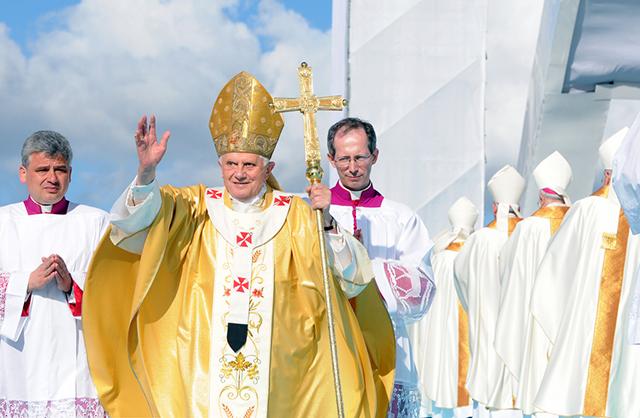Pope Benedict XVI is to resign from his office at the end of this month. The Pontiff says he is too old to continue at the age of 85.
The move has come as a shock, but in theory, there has never been anything stopping Pope Benedict XVI – or any of his predecessors – taking a piece of paper out of his writing desk and drafting a letter of resignation to hand to the College of Cardinals, the supreme electoral body of the Catholic Church.
Under Canon Law, the only conditions for the validity of such a resignation are that it be made freely and be properly published.
But no pope has done this in modern times, until now.
In 2005, it was revealed that Pope John Paul II had considered resigning five years previously, when he was 80. In his will and testament, he had said he hoped God “would help me to recognize how long I must continue this service”.
There has also been persistent speculation by historians that during World War II, Pope Pius XII drew up a document stating that if he were to be kidnapped by the Nazis he was to be considered to have resigned, and a successor should be chosen.
As the Vatican has delayed the full release of its archives relating to Pius’s pontificate, because of a dispute over his reaction to the Nazi Holocaust, there is no means of verifying whether this is true.
Going back further in time, the last case of a pope resigning dates back a further five centuries. Pope Gregory XII – who reigned from 1406 to 1415 – did so to end what was called the Western Schism.
There were three rival claimants to the papal throne at that time – the Roman Pope Gregory XII, the Avignon Pope Benedict XIII, and the Antipope John XXIII. Before resigning, Gregory XII formally convened a Church Council and authorized it to elect his successor.

The only other significant example of a papal resignation dates back even further in time.
In 1294, Pope Celestine V, only five months after his election, issued a solemn decree declaring it permissible for a pope to resign and then did so.
He lived for two further years as a hermit, and was later declared a saint. The decree that he issued ended any doubt among canon lawyers about the validity of a papal resignation.
But Pope Benedict’s decision to lay down his high office will come as a genuine shock to Catholics all over the world.
He has presided over the Catholic Church during a period when repeated accusations of sex abuse were made against the clergy.
But throughout that time, the Vatican vigorously defended Benedict’s papacy and his record during the period when he was Cardinal Archbishop of Munich and subsequently head of the Congregation of the Doctrine of the Faith (CDF), the watchdog Vatican department responsible for disciplining priests guilty of bad conduct.
Some earlier popes who stood down
- Martin I (649-655): Exiled to Crimea by Roman emperor Constans II, where he was imprisoned and tortured – after his death he was made a saint
- Benedict V (964): Forced to stand down by Holy Roman Emperor Otto I, who had another preferred candidate
- Benedict IX (1032-45): Sold papacy to his godfather, then had change of mind and tried to seize it back – he was later excommunicated
[youtube 3nU24efBzeI]
